 |
| The first Arctic grayling of this trip. |
The area has two official campgrounds, but many people just camp right next to the creek at the designated gold panning area. After 1.5-2 hours of drive from Fairbanks on Steese Highway, we got onto the unpaved, but well-maintained US Creek Road for seven miles or so. It is worth stopping at the top of the hill before going down to the Nome Creek Valley to enjoy the beautiful tundra plants. This time, it was pretty windy and cold, so I didn't take many photos unfortunately. But quite a few plants were already in bloom. At the bottom of the hill, there is a trail/road to the gold panning area on your left immediately after crossing the bridge. The trail/road is rather bumpy, but you can drive into the panning area without 4wd. Also the trail/road is wide enough, so it is easy to pull the trailer into the area.
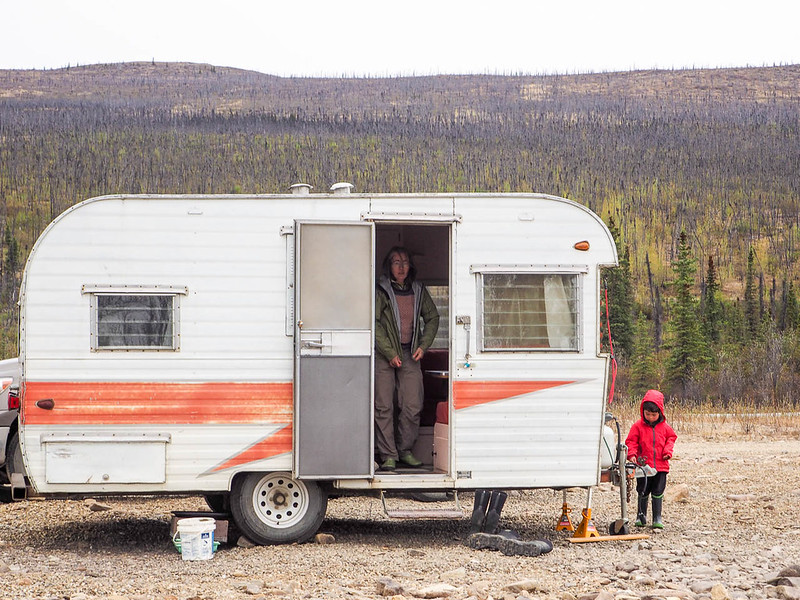 |
| Our camper, 1968 Fireball |
Next morning after breakfast, we decided to start with gold-panning. Put some dirt in the pan, and gave it a bit of shake. But we were too careful, and it took long time to get rid of the dirt. Finally, we got to the "heavy" stuff. Now Taiga saw lots of shiny things there, and got excited. But the trouble was that we didn't know how to tell which of the shiny ones are the real gold. In YouTube videos, they seem to easily tell gold specs easily. I brought out my trusty 10x loupe and started to examine each of the shinny particles. We could see a lot of them were not gold, but picked out a couple gold-like things. We probably spend 30 min. or so to go though just one pan of dirt. After a couple hours of frustration, Taiga wanted to go fishing, instead, which I thought was a better idea, too.
After lunch, we hiked along the river to find fishing spots. We hiked about 1-2 miles down to the "maze", the remnant of old mining activity. We tried a couple spots, which were productive 2 years ago, but no fish. We also tried a bit of panning around the maze, but still we had no idea if we were getting gold or not. No fish and no gold, things weren't going too well. Kids are great at finding fun out of anything, but I could see a bit of disappointment in Taiga's face. On the way back to a camping spot, we tried to fish a place where I've never tried before. The area didn't look too promising for fish to be honest. I tried #12 Moose Hair Caddis (moose hair is from a moose hunted by our friend, Matt Olson) after I lost a parachute style dry fly (both are tied by Taiga). And bingo! First fish! An excitement was immediately back on Taiga's face, but it went back to serious face when I handed the rod to him. After his careful and gentle fight/handling, he landed a pretty big one. Much bigger than I expected from such a small creek! He was so satisfied and appreciating the beauty of the Arctic grayling when the fish swam away after he released it. We caught another one on the way back.
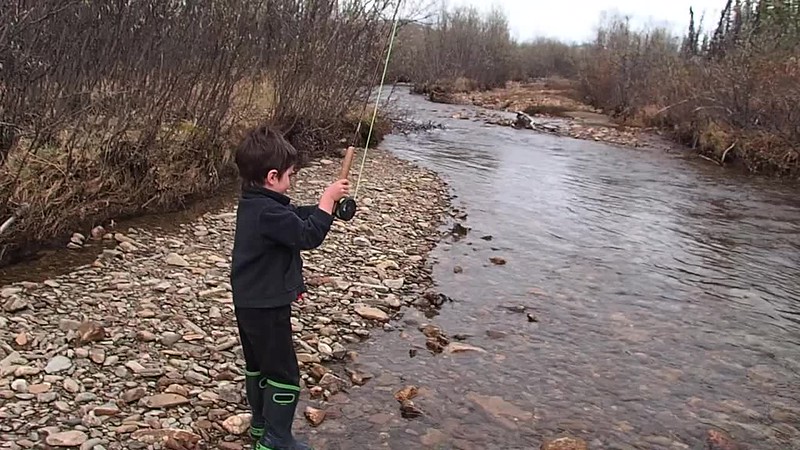
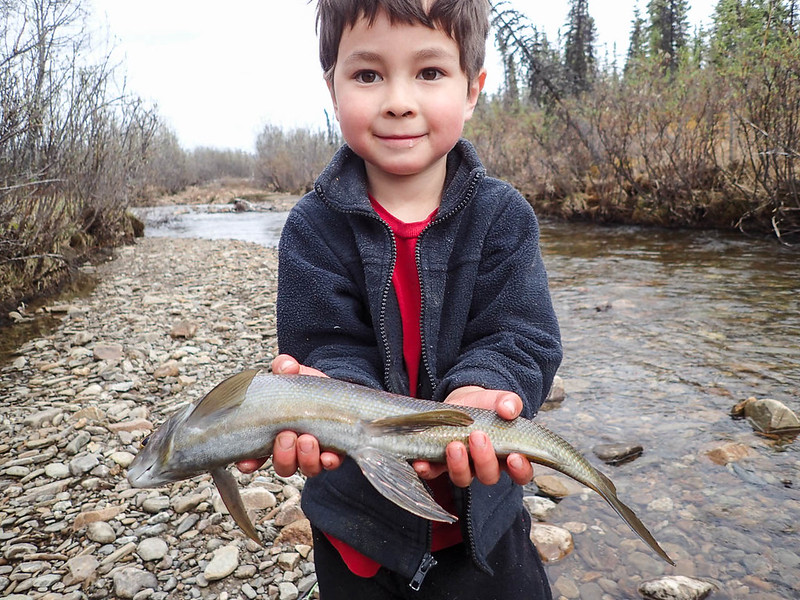
After the first catch, he got engaged into the fishing mode fully, and forgot about gold. So he wanted to go fishing again immediately after post-dinner marshmallow roasting.

We didn't catch any more graylings. However, I enjoyed additional 1-2 miles of hike with nice father-son-kind of moments, talking about how to think like fish. In one spot, I noticed something dashed away in the shallow water. It was my first time seeing a slimy sculpin. Taiga's predatory mode kicked in and he started to chase it by hands. I didn't expect that he could catch it, but he exclaimed "Got it!" after a couple minutes of splashing! The expression in his face was priceless. We, boys, understand the satisfaction of having the prize in our hands even though we'll be saying good-bye in a minute. Just looking at it isn't enough for us. It is something a mother may not understand. Taiga released the sculpin, but he decides to repeat the catch-and-release cycles a couple more times. I thought that it was a bit cruel, but he was very gentle, and the sculpin was rather "friendly" (well, I'm sure it was very scared).
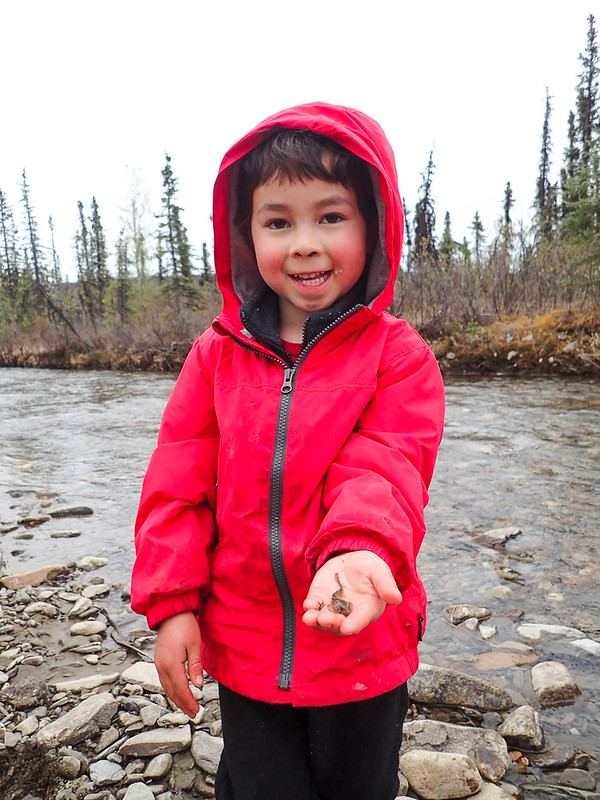 |
| Taiga caught Slimy sculpin (Cottus cognatus) by hands. |
 |
| Slimy sculpin (Cottus cognatus) |
In the third day, Taiga's focus was still fishing and sculpins. We caught a couple of each in the morning, and we headed back to the town after lunch. On the way home, we stopped at Pedro Dome public gold panning area. There were about 9 people panning in the short section. We were watching how they are doing, and one person asked us if we wanted to see gold. He showed us and explained how to do it. He was very efficient, and within a couple minutes, he finds 2 tiny gold in his pan! That was a great contrast to us, who were afraid of losing gold and spending 30 minutes to go through a pan! We were so excited, and we decided to try it. In the first pan, I found one relatively large spec of gold. Taiga was excited, and proudly showed it to the person who taught us. He confirmed that it was a gold , and congratulated him. After a couple tries, it became easier, and we found another one. Diana was still having a bit of trouble, but I think we can improve out techniques after a couple more tries. It turned out the gentleman owns a company called Gold Cube which specialize on gold mining equipments (link). He was such a nice and friendly person, and he was showing many kids and people how to do it. Thank you very much for introducing us to gold panning!
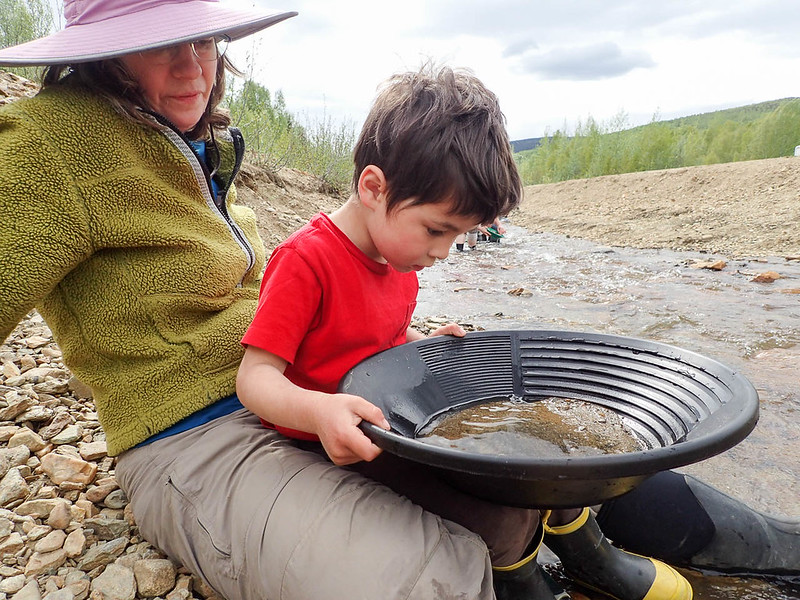
After a while, Taiga's focus changed to catch swallowtail butterflies, so we went back to the truck and got insect nets. After talking about the butterfly to our friend, Derek Sikes, the curator of the insect collection at the UAF museum, we learned that there are two types of swallowtails around here, Old-world swallowtails (Papilio machaon) and Canadian tiger swallowtails (Papilio canadensis), and we probably saw a swarm of the former. Unfortunately, wind picked up, and we couldn't catch any. But Diana managed to catch a wood frog (Lithobates sylvaticus). There are only 6 native amphibian species in Alaska, and it is one of them (information about Alaska amphibians).
 |
| wood frog (Lithobates sylvaticus) |
We got back home by 4:30PM on Monday, and we had just enough time to take bath and eat dinner before heading to Taiga's first soccer practice after dinner. It was a packed memorial day weekend. There were unexpected things (forgetting a piece of rod, we didn't know how to tell gold from other shiny things, or catching an unexpectedly big fish from a small creek). But I optimistically think that unexpected things (good or bad) are a fun part of camping, and they provide good opportunities for a kid to grow.
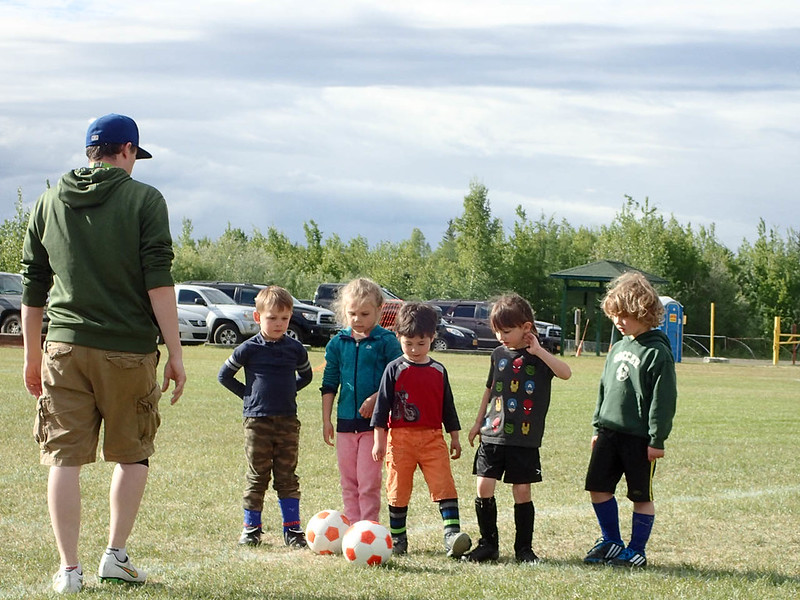 |
| Team K-15 with the coach, Garrett. |
Comments
Post a Comment